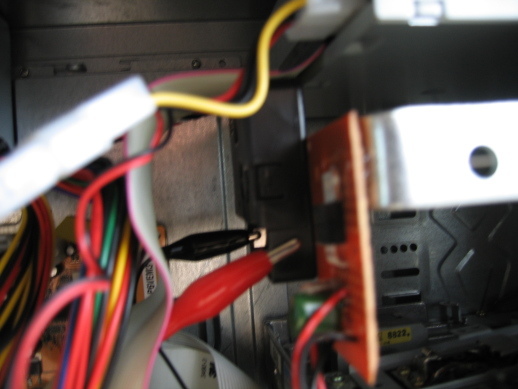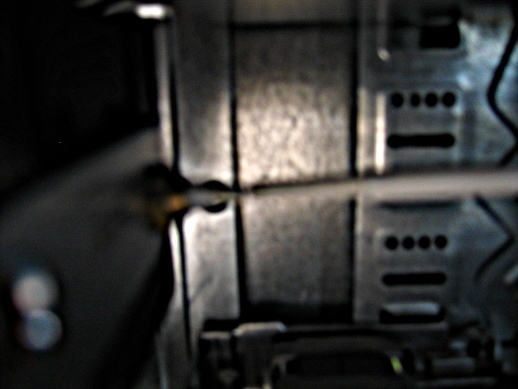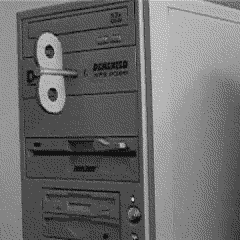Most computer geeks who go for case mods put in windows (no doubt to go with their WinDoze), often with bright lights and decorative internal cables. Or custom paint jobs. Or elaborate cooling systems. Occasionally, you’ll see a computer case veneered in hardwood. Once in a while, you’ll even see a computer that’s been steampunked (just do a GOOGLE image search on “steampunk computer”).
My own case mod is a bit different in nature. It just involves an unused drive-bay on my beautiful new beige (yes, BEIGE!) computer case (one I’d specifically bought for the large number of front-panel drive bays).
I’m into sight-gags on computers. I’ve used a “brick wall desktop pattern” ever since I customized my first Macintosh floppy disk back in the late 1980s. My hard drive icons are either flowchart symbols for disks, or more recently, 1970s-era removable disk packs. My icon for Mozilla Thunderbird is carrying a bottle of Thunderbird (you know, the cheap wine!).
I’m also a fan of Bill Holbrook’s “On the Fastrack” comic strip. It’s a workplace strip, but one with both a strong computer element (much stronger than Dilbert’s) and a strong fantasy element (like a shape-shifting dragon, named “Candy Moatmonster,” as the company’s chief of security). And one of the running gags of the strip has been a desktop computer so ancient that it has a huge wind-up key sticking out of it.
And I’m also a contrarian as far as computing power is concerned: instead of wanting fast, overpowered boxes to make up for the shortcomings of WinDoze, I prefer to run older boxes with faster operating systems. For example, my notebooks are 486s, running IBM PC-DOS 2000. My Mac is a “bionic desk lamp” iMac. And this case mod is on a DOS/Linux dual-boot, one that originally had the motherboard out of a Fry’s cheapie, then when that motherboard somehow lost its ability to run Linux at any reasonable speed, I installed the motherboard out of an old Dell XPS D300. (NOTE: Dell motherboards of that generation have proprietary power connections: industry standard ATX power plugs will fit, but if you actually apply power, something gonna blow up!)
I wanted a wind-up key. An animated one. Sort of like the ones they make for automobiles, only smaller.
More to follow.



